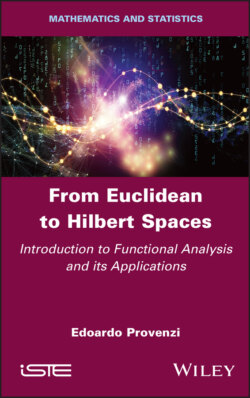Читать книгу From Euclidean to Hilbert Spaces - Edoardo Provenzi - Страница 16
1.2.1. The parallelogram law and the polarization formula
ОглавлениеThe parallelogram law in ℝ2 is shown in Figure 1.1. This law can be generalized on a vector space with an arbitrary inner product.
THEOREM 1.6 (Parallelogram law).– Let (V, 〈, 〉) be an inner product space on . Thus, ∀v, w ∈ V :
Figure 1.1. Parallelogram law in ℝ2: The sum of the squares of the two diagonal lines is equal to two times the sum of the squares of the edges v and w. For a color version of this figure, see www.iste.co.uk/provenzi/spaces.zip
PROOF.– A direct consequence of law [1.4] or law [1.5] taking ‖v + w‖2 then ‖v − w‖2.
□
As we have seen, an inner product induces a norm. The polarization formula can be used to “reverse” roles and write the inner product using the norm.
THEOREM 1.7 (Polarization formula).– Let (V, 〈, 〉) be an inner product space on . In this case, ∀v, w ∈ V :
and:
PROOF.– This law is a direct consequence of law [1.4], in the real case. For the complex case, w is replaced by iw in law [1.5], and by sesquilinearity, we obtain:
By direct calculation, we can then verify that ‖v + w‖2 − ‖v − w‖2 + i ‖v + iw‖2 − i ‖v − iw‖2 = 4〈v, w〉.
It may seem surprising that something as simple as the parallelogram law may be used to establish a necessary and sufficient condition to guarantee that a norm over a vector space will be induced by an inner product, that is, the norm is Hilbertian. This notion will be formalized in Chapter 4.
